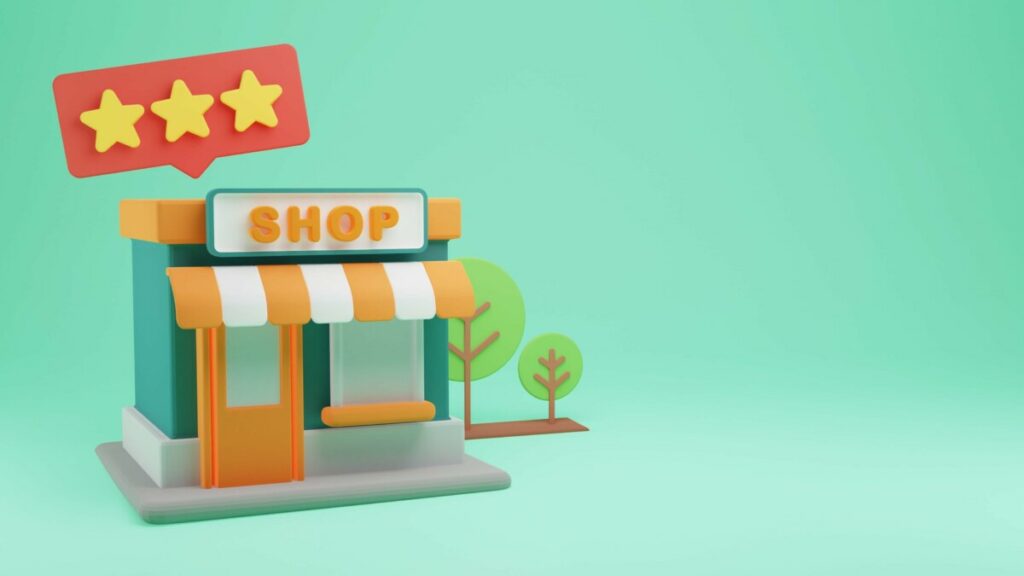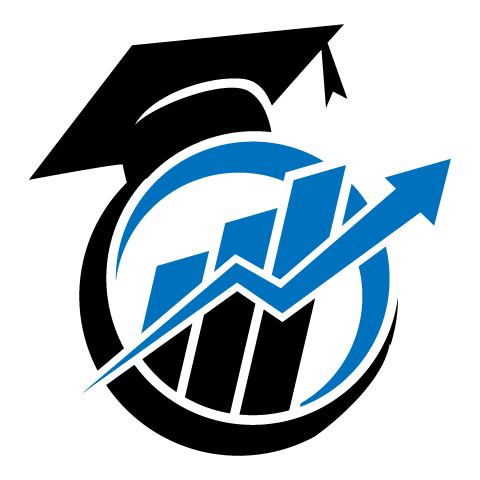How to Start an Etsy Shop
Online marketplaces are a great place to start for small businesses!
The costs involved in setting up an online shop are minimal, and you have readymade access to a solid customer base.
If you are a small business making and selling products in small quantities, investing in a brick-and-mortar store is not worth it. Setting up an online shop is also a great way to test the waters before you expand your business further.

Etsy is a great place to start your online business. It’s a one-stop destination for creative entrepreneurs selling all kinds of products – custom jewelry, clothing, custom art, home decor products, handicrafts, souvenirs, craft supplies, pet accessories, baby products, handmade cosmetics, organic skincare products, vintage items, wellness products, etc. The best part is starting an Etsy shop is free of cost.
Hello there! If you are an entrepreneur or a small business looking to start an Etsy shop but not sure how to go about it, we are here to help. In this post, we’ll provide you a detailed description of all steps involved in starting and running a successful Etsy shop.
Running a successful Etsy store is all about the right branding and marketing. Of course, you must choose your niche carefully and create a great product line. But when it comes to selling online, your SEO and digital marketing strategy are equally important. Prospective customers should be able to spot your products easily while searching through Google or Etsy search engines.
In this post, we will give you clear insight into the tips and tricks of online branding and marketing in starting an Etsy shop.
In a nutshell, these are the main takeaways you’ll get from this post:
- Hands-on information & insight on conducting background research for setting up an Etsy store.
- Learn how to set up and customize your Etsy storefront along with the product listings.
- Learn effective marketing strategies to promote your Etsy store and attract more buyers.
- Gain practical knowledge and insight regarding means to configure and manage shop billing, payment, and order settings.
- Learn about the effective use of social media for marketing your Etsy products and services.
- Learn all about the different kinds of products you can sell on Etsy.
Is Starting an Etsy Shop Worth It?
It’s the first question that pops up in your mind whether starting a shop on Etsy is worth it in 2023.
It’s certainly worth it if you are a small business selling unique and creative goods. Etsy is not the ideal marketplace for selling assembly line products in bulk. It is estimated that more than 80 percent of the items sold on this marketplace are handmade. Etsy is known for artsy products not easily available on other platforms.
If you are passionate about making artisan goods and want to start your own business, Etsy is just the platform for you.
Etsy is great for giving exposure to your brand and creating a lucrative market. Let’s look at some of the statistics to prove our point.
Etsy gets traffic of 377.4 million per month on average. There are more than 40 product categories on the platform. According to various estimates, about 45 percent of Etsy sellers said they started their businesses through Etsy, that is they never sold their products anywhere else before joining Etsy.
In a nutshell, starting an Etsy shop is worth it because
- You get access to a vast buyer pool – Etsy gives sellers access to a huge pool of buyers. The best part is it’s a niche audience already interested in the kind of products you are selling, unlike platforms like Amazon where the audience is highly random and heterogeneous.
- You can make your business global – Etsy is great for small businesses wanting to branch out in the global market. The platform gives you access to a readymade pool of international customers willing to check out your products and invest in them. It provides a great opportunity to expand your business internationally without having to go the traditional way.
- Built-in advertising – Etsy is a great platform for beginners since it has in-built advertising tools. It gives you the option to pay for your products to make a prominent appearance in Etsy searches, category pages, and market pages. This enables you to have an edge over your competitors. It’s a unique feature of Etsy since not all online marketplaces give you the option to market your shop products online.
- Built-in marketing tools – Etsy saves your marketing expenditure by giving you access to plethora of free marketing tools. It’s one of those rare marketplaces where you don’t have to spend a bomb on marketing. They have in-built marketing tools to promote your shop such as email campaigns and promoted listings.
- Low Start-Up Cost – There are no membership fees to join Etsy and start a shop. There are no hosting and domain costs involved as well. There are nominal charges involved for listing items though. Depending on the sales volume, sellers would have to pay different kinds of fees. But the start-up cost is incredibly low.
How Much Does Etsy Take?
Before setting up an Etsy shop, you probably want to know what kind of fee Etsy charges on product sales.
Etsy has a range of fees you need to pay at different stages of your Etsy business.
- Listing Fee – You must pay this fee whenever you create a listing. The fee is flat at 0.20 dollars, irrespective of whether the product sells or not. The time-period of a listing is four months after which they would be automatically renewed for a fee of 0.20 dollars each unless you opt out of the automatic renewal option.
- Transaction Fee – It’s the fee you pay whenever you make a sale. You’ll have to pay a 5 percent transaction fee for each sale incurred through the platform. It would be 5 percent of the price specified for the listing along with the amount charged for extras like gift wrapping and shipping.
- Payment Processing Fee – This fee depends on the chosen mode of payment of the customers.
- Regulatory Operating Fee – This fee applies to Etsy sellers in some countries where following the compliance regulations comes with added costs. This fee is levied on each transaction and is based on a fixed percentage of the price displayed in each listing along with shipping.
- Shipping Fee – Etsy gives sellers the option of buying shipping labels for easy order fulfillment. Etsy deducts the cost of the shipping label and various add-on features like insurance from your balance to enforce this fee.
Steps to Start a Successful Etsy Shop
Etsy is one of the most beginner-friendly platforms for setting up a shop.
Even if you are selling on an online marketplace for the first time, no need to worry. The Etsy interface is easy to navigate, and you get a clear set of instructions on how to create your online store.
The Etsy site provides a lot of information to prospective sellers guiding you through the entire process of setting up a shop and telling you what kind of items you can sell on the platform. They also give you examples of case studies of successful Etsy entrepreneurs.
All this sounds exciting. But the information you get from their site comes in bits and pieces and from all over the place, so, it can be confusing for a new seller to navigate their instructions.
That is why we are here to help. In this section, we provide you with a clear-cut series of steps you need to follow for starting and running a successful Etsy shop.
1. Create an Etsy Account
To start an Etsy shop, you first need to set up an Etsy account.
The process is simple and will take a couple of minutes. You first need to create a personal account and then set up a storefront through that.
You must access the Etsy home page and select the “ Create Account” option from the top menu. You’ll then need to key in routine personal information including your name, address, contact details, etc. Etsy will also ask you to choose a username. You then receive a confirmation email from them, and using the link from the mail, you verify your identity and get going. Now, you get to sign in and update the “ About Us section with your shop information along with a profile picture.
Once you’ve completed setting up your profile, Etsy will show you the “Sell” option. Next, you click on this option.
Finally, you click on the option “ Open a Shop to get going with your Etsy business.
2. Optimize the Profile of Your Shop on Etsy
The next step is to embellish your Etsy storefront with the right kind of information and visuals.
You now need to work on your shop’s “ About” section and choose a compelling cover photo for your homepage.
Writing the “ About “ section of your Etsy store is as much about language as it is about information. The copy should be brief, catchy, engaging, and able to convey the essence of your brand and product line.
Remember that the “About” section is your chance to tell your brand’s story to the audience. Make it emotional. Make it authentic. Feel free to talk about your journey, how you started, what your struggles were, and how you finally got to selling on Etsy.
Don’t forget to talk in brief about the USP of your items! Remember that is why you are here – to sell!
Whatever sets you apart from other Etsy shops should find clear mention in this section.
Feel free to add 2-3 taglines and highlight them in bold. They will essentially convey the essence of your brand.
Use positive and affirmative words to draw in the audience like creative, original, handmade, natural, authentic, trustworthy, lovingly crafted, soulful, etc. Words that have an emotive appeal have a tremendous impact on the purchasing decisions of the customers browsing through.
Also, you must include relevant keywords from your niche in the shop description section. For example, if you have a shop selling handmade mugs, you should use keywords like “ mugs gifts”, “ mugs handmade”, “ mugs for gift”, “mugs for mom”, “mugs for dad”, etc.
Remember to keep the language clear and concise. Avoid using too much of jargon. Go for short sentences so that people get a breather while reading the text.
Next, make use of a shop icon that gels with your brand image.
Finally, use a good-quality cover photo for your storefront homepage. Check the specifications required from the Etsy website. The photo should be desktop and mobile friendly and represent your brand image well.
3. Set the Preferences for Your Shop
The next step for Etsy sellers is to set up their Shop Preferences.
These preferences would give Etsy all the relevant information regarding your selling process.
You would need to update the following preferences in this section:
Language – It’s the default language you would use in your ‘ About Us” section and shop listings. Choose your preferred language carefully because you cannot change it at a later stage. But you can certainly enable the option of translations in multiple languages once your store is set up.
Country – You need to specify the country where your shop is based. This information is important because many sellers provide shipping only locally. Also, Etsy might subject you to certain restrictions based on your location.
Currency – Next, sellers must specify the currency used for pricing shop items.
Business Type – Etsy would ask you to specify whether you will be selling part-time or full-time. This doesn’t affect your sales or your shop setup. Etsy just collects this information for its own purpose.
Once you’ve specified all the preferences, you just got to click Save and Continue on the bottom right-hand side of the page.
4. Choose a Unique Name for Your Shop on Etsy
Choosing a name for your Etsy shop is the most crucial step.
Your shop name will feature right at the top of your Etsy shop page along with a brand logo representing the name.
A lot of research and homework should go into choosing your shop name. You can’t just pick up a random name on a whim. The name has to be unique, creative, and catchy, and most importantly, it should reflect the essence of your brand and what you stand for.
Etsy has some rules for creating a shop name. The name can be no longer than 20 characters, and you can’t use any spaces or punctuation marks.
The shop name also becomes a part of the web address or URL of your Etsy shop.
You should keep the following points in mind while choosing a name for your Etsy store.
- It should reflect the core offerings of your business, that is, people should be able to recognize your core product line when they see the name.
- It should be able to convey the exact feeling or vibe you want customers to associate with your brand. Do you want to position your brand as a bohemian business targeted at youngsters? Or do you want to position it as a more elegant and sophisticated one targeting middle-aged people? You got to figure out all these things before naming your shop.
- Is the name easy to remember? Can you read it and spell it without struggle? The memorability quotient of the name is an important factor. It should have a high recall value.
- The name should be such that it looks catchy and attractive on all your offline publicity material including your business card.
- Is the name unique? It’s a practical consideration. The chosen name shouldn’t be in use by another Etsy seller.
- The name should be visually appealing. Most products sold on Etsy are creative and artsy. Your Etsy shop name should be visually appealing. The moment someone sees the name, they should be able to create mental images of what it represents.
Ideas for Naming Your Shop on Etsy
- Use descriptive names combining an adjective with a word representing your niche. For example, if you have a shop selling mugs, your Etsy name could be “ MaverickMugs”. Or let’s say you have a shop specializing in digital art, then your Etsy name could be “ Gorgeous Graphics”. The idea is to have a name of two or a maximum of three words that describes your niche and portrays the special quality you bring to it.
- Use personalized names. It is the easiest way to name your shop on Etsy. You combine two words – your name + the name of the product or the niche. Examples: “ CraftsbyCatherine”, “ HappyDecorbyKaty”, “Kate’sCraftsyCloset”, etc.
- Funny or weird names. Funny or weird names with unusual word combinations often do the trick! Don’t stretch it too far through. You can be clever and imaginative with your word choice, but the audience should be able to understand what you are trying to say. Examples: “ SugarBerryCottage”, “MoonlitEscapades”, “ SheepishWeaves”, “SnazzyStitchers”, etc.
- Use positive and affirmative words. Your Etsy store name should exude happy vibes. The idea is to evoke positive and happy emotions in the customer’s mind. So try and have a name that creates a vibrant and upbeat mood. Examples: “JazzyDecor”, “ ColourfulVibesArt”, “ CosmicCuriosities”, “EnchantedWonderShop”, etc.
Ideally, you should follow the Research, Ideate, and Brainstorm approach for naming your Etsy shop.
First, you must do detailed background research on the kinds of names used by other shops in your niche. Then, you should start drafting your ideas and come up with a list of names. Finally, you should have brainstorming sessions with other people to know their reactions and viewpoint on your suggested names.
Check out our article on Best Etsy Name Ideas for Your Shop! & Etsy vs. Shopify – Which Is Better? Shopify or Etsy?
5. Create high-quality product listings for your shop on Etsy
Now that your Etsy shop has been set up, it’s time to create high-quality product listings that convert.
You now need to go to the “ Shop Manager” section and click “ Add Listing”.
Select high-quality photos for each product listing. Remember that this is what the customer directly sees when they search for products on the Etsy search engine. They get to see your product listing even before they know the name of your shop. The success of your store largely depends on how well you can capture customer interest in your product listing.
It is the place to display your unique sales pitch. Include relevant and catchy photos that give the reader an excellent overview of your product and its attributes. Etsy allows you to add up to 10 images per listing.
The next important thing here is to add the product description. You start with creating descriptive titles and tags on the top. For example, if your product is a handmade soap, your descriptive title would say something like – Pick 5 Bars Saffron & Honey Soap – Soap Pack – Assorted Soap – Handmade Soap – Variety Soap.
Etsy gives you the option to include up to 13 product tags to access additional keywords that translate into a higher discoverability quotient.
The main product description section comes at the bottom of the page. Make it as detailed as possible. This is the space to give as much information about your product and the manufacturing process as you can. Descriptions that list all the ingredients and spell out even the minutest of product details can create trust in the customer’s mindset and lead to conversions.
6. Choose Your Etsy Business Payment & Billing Methods
With your listings ready to go, it’s time to configure your payment and billing settings so that you get paid on time without hassle!
You must consider various factors while choosing your preferred payment method on Etsy. You must realize that many prospective customers would be reluctant to share their credit card details online. So you have to provide them with other payment options.
The ideal thing for the sellers to do is to go for the Etsy Payments option that integrates various modes of payment. This allows you to offer a range of payment options without having to set up multiple merchant services accounts.
This payment method provided by Etsy accepts:
- Credit Cards
- Debit/Bank Cards
- Apple Pay
- Google Pay
- Paypal
Finally, you got to set up the Billing which is all about how you will pay Etsy for the different kinds of fees levied by them that we already explained in detail at the beginning of the post. For this purpose, you need to set up a separate billing account.
7. Promote Your Etsy Shop Business
The final step is to effectively promote your Etsy shop business to attract the right kind of buyers and boost conversions.
SEO marketing is the most effective strategy for promoting an online shop. Make sure you incorporate the best SEO practices and incorporate keywords organically in your product descriptions, tags, and titles.
Also, social media is a great marketing tool. Create a strong presence on social media platforms like Instagram, Facebook, Pinterest, Twitter, etc. Instagram, especially, is highly useful for promoting your Etsy business since it’s a highly visual platform, and you can promote your products through pictures and reels.
You might consider including links to your social media profiles in your Etsy bio so you open up parallel channels of communication to interact with potential customers. Building a consistent social media following is the key to achieving success as an Etsy entrepreneur. Social media allows you to build a rapport with the customers. People are more likely to invest in your product if they know your story and feel connected to your brand. Social media gives you the platform to constantly engage your audience with new posts, reels, memes, discussion threads, etc.
You could also opt for Etsy’s paid advertising services. Etsy ads run on a fixed daily price. Using this service, you can make your product listings appear at the top of their search results. This service is especially handy to get access to the market when you are launching some new product or have just set up a store on Etsy.



